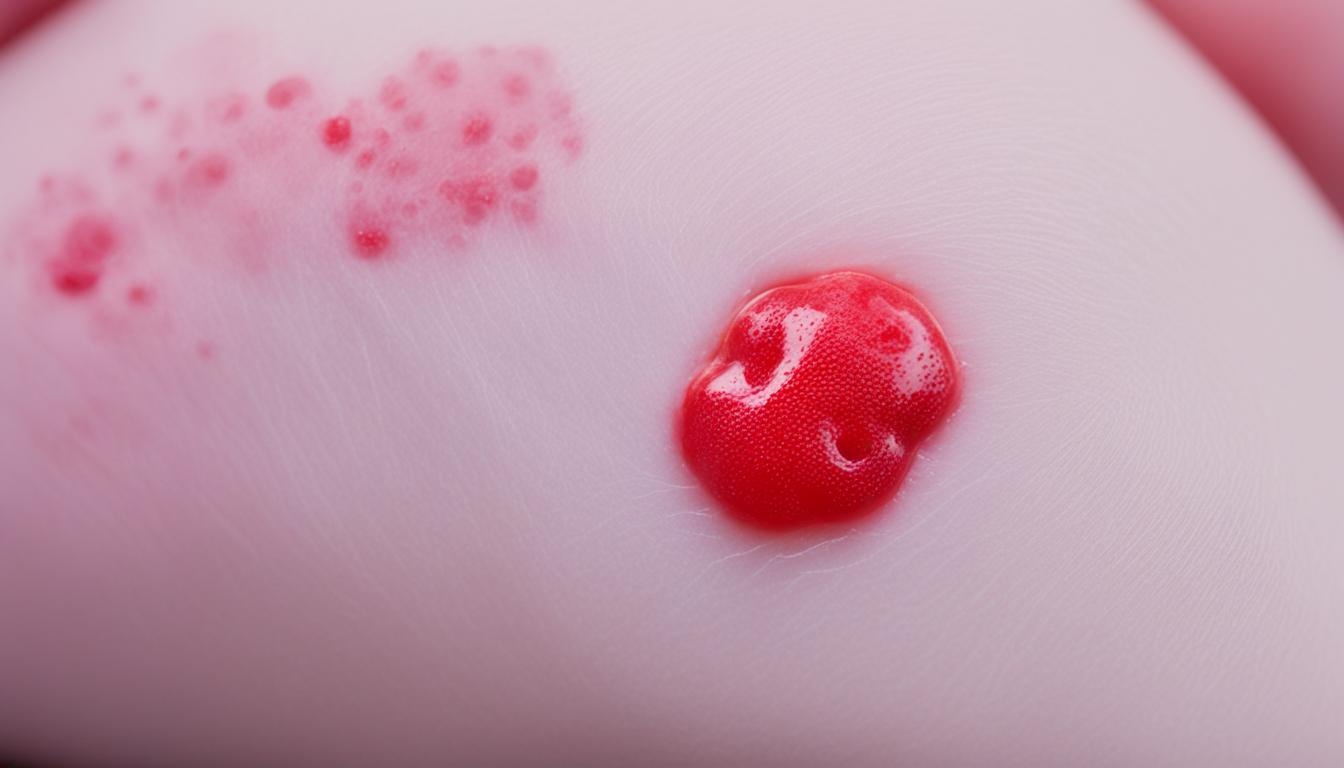Varicella, or chickenpox, is a acute infectious disease. It’s caused by the Varicella zoster virus (VZV). You get a widespread rash and may also have a fever. This disease mostly affects kids but can happen in adults too.
This virus comes in through your breathing or eyes. Then, it grows in your throat and nearby lymph nodes. After that, it spreads throughout the body, leading to the well-known rash.
In healthy children, chickenpox is often mild. They get the rash, which then goes away in a few days. But, it can be more serious for adults or those with weaker immune systems.
If chickenpox gets bad, it can cause bacterial skin issues or affect your lungs and brain. A few might even get Reye syndrome. Luckily, there’s a vaccine. It helps a lot in reducing how bad chickenpox can get.
Stem cell therapy is also being looked at as a possible treatment for severe chickenpox. It could mean better health and a quicker recovery for those who really need it.
Key Takeaways:
- Varicella is an acute infectious disease caused by the Varicella zoster virus (VZV).
- It mainly affects children but can also occur in adults.
- Complications of Varicella include bacterial skin infections, pneumonia, and central nervous system manifestations.
- Vaccination has significantly reduced the morbidity and mortality associated with Varicella.
- Stem cell therapy is a potential treatment option for severe cases of Varicella.
Varicella-Zoster Virus (VZV) and Pathogenesis
The Varicella-Zoster Virus (VZV) belongs to the herpesvirus family. It causes two diseases. First, it gives us chickenpox, also known as varicella. Later in life, it might come back as shingles, or herpes zoster.
When we breathe in or get it in our eyes, VZV enters our bodies. It then multiplies in our nose and neck’s lymph nodes. The virus then travels through our blood to other parts. This is why it can affect different organs and make us sick.
After the first infection, VZV hides in our nerve cells. Later, it might become active again, causing shingles. This usually happens when we get older or when our immune system is weak.
Mostly, VZV spreads from one person to another. It doesn’t last long outside the body. Coughing, sneezing, and the fluid from chickenpox rashes are sources of the virus. This makes it easy to pass from one person to the next.
Knowing how VZV works helps make vaccines and treatments for chickenpox and shingles.
Clinical Features and Epidemiology of Varicella
The time from getting infected to showing signs is usually 14 to 16 days. But this can be 10 to 21 days. Children usually get a rash as the first symptom. But adults might feel sick with a fever first. Then, a rash shows up. This rash spreads quickly over the body, causing itchy bumps.
Most healthy kids have a mild case. But adults and those with weaker immune systems can have more serious problems. These can include skin infections and lung issues. In rare cases, it might affect the brain.
It’s called “breakthrough varicella” when vaccinated people still get sick. However, it’s less severe. Thanks to vaccinations, Varicella‘s spread and its severe effects have decreased a lot in the U.S.
Epidemiology of Varicella
To get the big picture on Varicella, we need to look worldwide. It affects both kids and adults everywhere, but the number of cases varies by region. It spreads mainly through direct contact or the air from coughing or sneezing.
Many places now have vaccines to fight Varicella. These efforts have done a lot of good. They’ve lowered the number of cases and how often people need to go to the hospital. And, they’ve helped lower the risk of dying from Varicella.
Complications of Varicella
Varicella, or chickenpox, can have bad effects, especially on those with weaker immune systems. Let’s look at some of the risks:
| Complication | Description |
|---|---|
| Bacterial skin infections | Skin sores from itching can get infected, leading to further health problems. |
| Pneumonia | It can cause lung problems, which are very serious. |
| Central nervous system manifestations | In some cases, it can affect the brain and spinal cord, leading to dangerous conditions. |
| Reye syndrome | A very severe condition that mostly affects children. It can hurt the liver and brain. |
Severe issues are not common but staying alert is important. We should be careful with those more at risk. This helps us find and treat problems early.
Conclusion
Varicella, or chickenpox, is caused by the Varicella-Zoster Virus. It usually affects children, but it can be serious for adults and those with weak immune systems. Thanks to the Varicella vaccine, the number of people getting very sick has gone down. This means fewer trips to the hospital and fewer deaths.
Yet, for serious Varicella cases, stem cell therapy is showing great promise. It could lead to better recoveries and quicker healing.
Keeping up with vaccinations and other preventive measures is important to fight Varicella. If we work on getting more people vaccinated and educate others about the disease, we can help stop its spread. With ongoing improvements in treatment, especially with stem cells, there is positive hope for the future of those dealing with severe Varicella.

